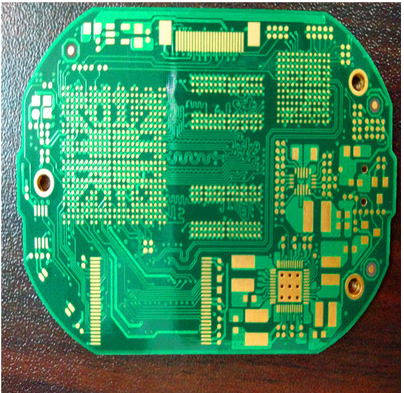Reliability of circuit board ball foot solder joints
1. The difference of local thermal expansion coefficient
Since the CTE of the chip itself is only 3ppm/ degree Celsius, while the organic carrier board is close to 15 ppm/ degree Celsius, so when the packaging and assembly are subjected to strong heat, as well as the internal heat generation in the subsequent work of the component, it will cause a lot of stress. Tensile stress, and then under the accumulated strain, often cause the neck to crack and break. However, in the steps of using silver glue as Anjing, if the silver glue can be thickened, some local CTE-mismatch problems can also be alleviated. Because the central area of the abdominal bottom is not easy to get enough heat and it is difficult to weld under it, designers only dare to place important signal balls on the periphery of the abdominal bottom, and only some insignificant earth-connecting and heat-dissipating balls can be arranged inside.
Second, the height of the ball
The higher the height of the post-welding ball, the better the reliability. Usually the post-welding ball height of 63/37 is about 400-640μm, but the height of Sn/Pb90 can be increased to 760-890μm. Generally speaking, various high-temperature processes will flatten the ball height; for example, the original height of a ball is 750μm, the height after the carrier board is implanted will be reduced to 625μm, and the height of the PCB will be reduced to 500μm after assembly. The flatter the ball, the worse the reliability. The table on the right shows the relationship between 63/37 ball height, ball pitch and pad diameter. The height of the original ball is usually reduced by 10% after fusion welding, and the height of the original ball will be reduced by 250% if there is a heat sink.

3. The influence of pad shape and surface treatment
BGA's top carrier board ball planting place after repeated heating, may cause interface cracking due to shearing force, so the ball pad must be specially designed with less risk "green paint limit" design. However, this kind of solder joints that limit the expansion of solder will become a dangerous area of stress concentration and its reliability will be greatly threatened if the tin is not fully dispersed. In the case of the same standing height, if the SMD is changed to NSMD, the solder will flow down the side wall of the copper pad in the expansion site, forming a strong bond like a barb. In the PCB solder joints that are not excessively short in height but can be fully utilized, the subsequent fatigue life of the PCB solder joints will be 1.25-3 times longer than that of the carrier board solder joints.
The ENIG treatment layer on the backing surface is not suitable for BGA soldering due to the trouble of black matting. The main reason for the formation of the black pad is that the gold water attacks the relatively old and weak nickel surface, so that the nickel layer is too late to dissolve during the replacement process, but is surrounded by the rapidly deposited gold layer, and continues to oxidize and deteriorate inside to become a NixOy black pad.
Furthermore, it is best not to set PTH in or near the BGA ball pad area of the PCB board surface to prevent the solder from flowing into the hole during solder paste welding. As for those with blind holes in the pads, it is more likely to cause voids in the solder joints. At present, the additional voids caused by the air in the blind holes are considered in the previous article, and the acceptance of such additional voids can be discussed separately. In fact, it is impossible to distinguish which is the solder paste organic matter and moisture or the void caused by the blind hole. The industry is trying to use copper electroplating to flatten it. At present, blind holes with a diameter of less than 2mil have been effective, but it is still difficult to flatten larger blind holes with a diameter of 5mil or more.
Fourth, the failure analysis of the ball foot fresh spot
(1) Temperature cycle:
After deliberately soldering the BGA or CSP on the board, through multiple thermal cycles of various high and low temperatures, or after thermal shock, the solder joints often break at the board, but rarely at the PCB. . This is due to the failure of the shear mode.
(2) Bending test:
When the PCB surface of the BGA or CSP is welded and passed the mechanical forcible bending test, not only broken ends will occur but also broken feet will occur, especially those with accumulated stress in the four corner areas, or the length of the board. The ball feet listed in the direction are also prone to broken heads or broken feet. In terms of the mounting position of the PCB board, this test is the most likely to fail in the easy-bending area in the center of the board.
(3) Drop test:
When the assembled board of BGA or CSP hand held electronic product is soldered for drop test, its four corners are also most likely to be broken and broken. The failure mechanism of both the above-mentioned bending test and the drop test here should theoretically belong to the tear-off mode.
In order to reduce the cracking of the BGA/CSP ball solder joints in various hand-held electronic products, American Amkor has used glue on both sides of the four corners of these grid-type components to strengthen the gap between the board and the board. The additional joining process is called Corner Fill to replace the Under Fill method of expensive flip chip packaging.